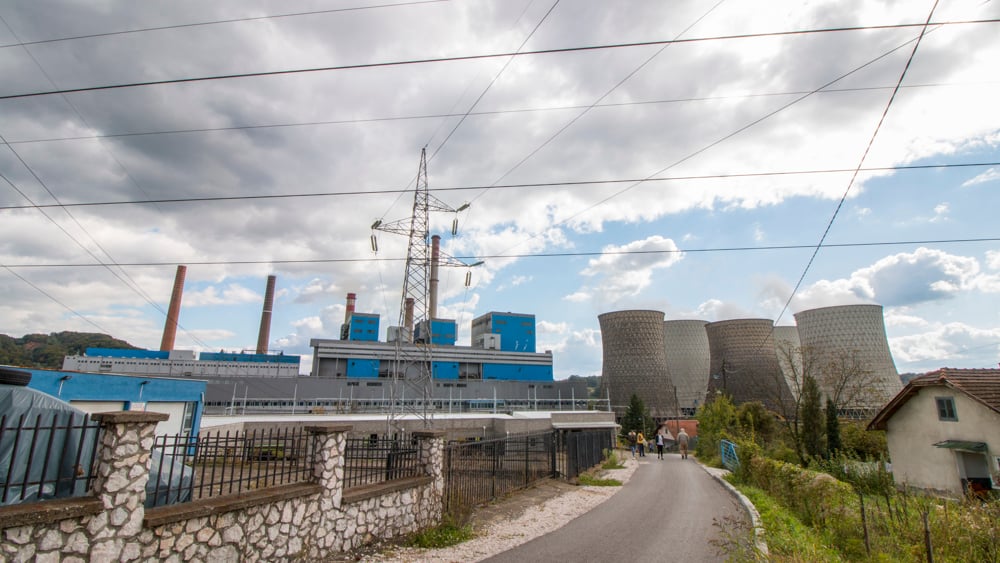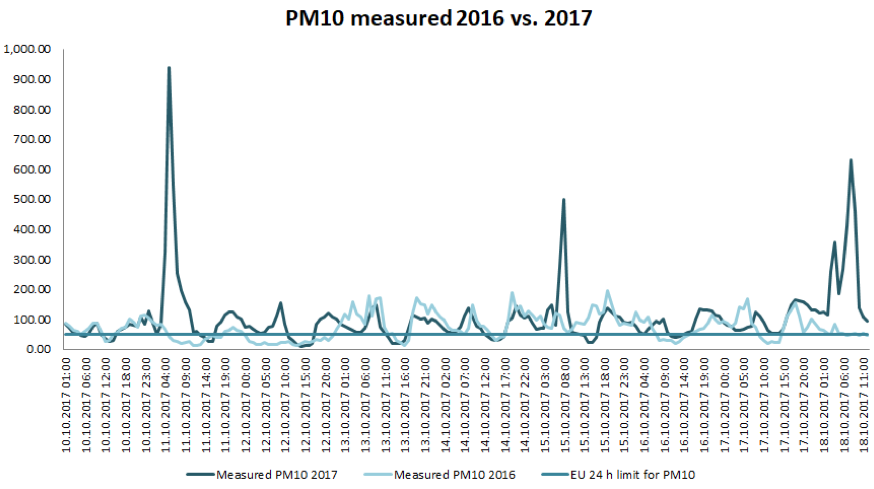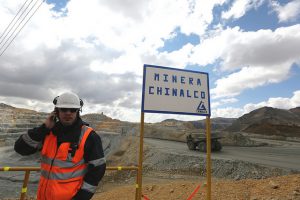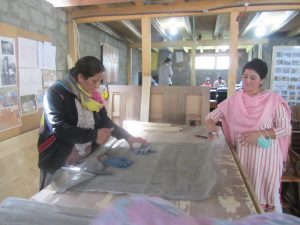It’s a warm morning in early October, the sun is bright and a faint smell of burnt coal hangs in the air. Bankwatch is in Tuzla, Bosnia and Herzegovina, to deploy dust pollution measurement equipment, exactly one year after we first set up independent monitoring here.
In 2016, our particulate matter (PM) monitoring results were eye-opening: not only were both PM10 and PM2.5 values above the recommended limits set in Bosnia and Herzegovina and by the World Health Organization (WHO) on almost all the days observed, but the levels also skyrocketed in the evenings. This trend raised concerns about whether pollution filters at the Tuzla power plant were functioning properly.
This year, we are investigating local claims that pollution is worsening and trying to determine if the high peaks recorded are caused by the nearby Tuzla lignite power station and its associated facilities.
The monitoring equipment is placed for nine days in the same location as before and not once do the PM10 values fall below the legal limit of 50 micrograms per cubic metre for the 24-hour average. In fact, the average values during the observation period (October 10-19) are 40% higher than for the same period in 2016.
The values of PM2.5 measured are also higher than in the previous year by 10%, and the concentrations are twice the WHO recommendation of 25 micrograms per cubic metre for the 24-hour period. The locals were right.
If there is consensus in the medical world about anything related to PM pollution, it is that prolonged exposure to PM2.5 carries a high-risk factor for heart and cerebral diseases, as well as premature mortality.
Even more worrying is that October 2017 is much warmer than October 2016, meaning that the increased levels of particulate matter are not originating from household heating, which together with traffic is the favourite pollution bugbear of the authorities. There must be another source.
Where does the dust come from?
In the graph with PM10 emissions, three high peaks stand out: October 11 between 4am and 6am, October 15 between 4am and 9am, and October 19 between 7am and 9am. After looking at the meteorological data provided by our air pollution monitoring equipment for these specific intervals it’s clear that either the Tuzla coal plant or the associated ash disposal site, or both, are responsible for the spikes, depending on the wind’s direction.
When the wind blows from the north and the PM10 emissions are extremely high (up to 937 micrograms per cubic metre for an hourly value) we can point to the dried ash blowing from the dump in the direction of the town. Similarly, when the wind is blowing from the south and the PM10 emissions are high, it is obvious that the power plant’s chimney is the source.
What are the authorities doing about it?
The air quality in Tuzla is dire and has attracted the attention recently from international media outlets including Euronews, BBC and RAI News, whose television crews have made their way to this town in the world’s second most polluted country.
Yet the federal government is set to give the green light to the state-owned energy company, Elektroprivreda BiH, to build yet another unit at Tuzla’s power plant. The 450-megawatt proposed Tuzla 7 project would require additional coal capacity.
The project promoters claim that the new unit will be meet EU pollution standards but the project’s environmental impact assessment suggests it will not meet the EU’s recently-adopted Best Available Techniques (BAT) standards. Rather, the project is more likely to increase the volume of coal mined and increase ash production, which plays a critical role in aggravating local air pollution.
Local opposition to a new ash disposal site is high, and in April 2016 the local community representatives delivered a petition with 2,100 signatures against the proposal to the Federal Ministry of Environment and Tourism. While some units will be shut down in the future, constructing unit 7 would still represent an overall capacity increase, the exact opposite of environmental improvement.
As the ten-year saga continues, plans to build Tuzla 7 at an estimated cost of 722 million euros (US$858 million) received a boost when the government recently indicated a contract for a loan from the Export and Import Bank of China (China Exim) could be signed soon, provided the State Aid Council also gives its consent for loan guarantees. The plant is expected to be built by China Gezhouba Group and Guangdong Electric Power Design.
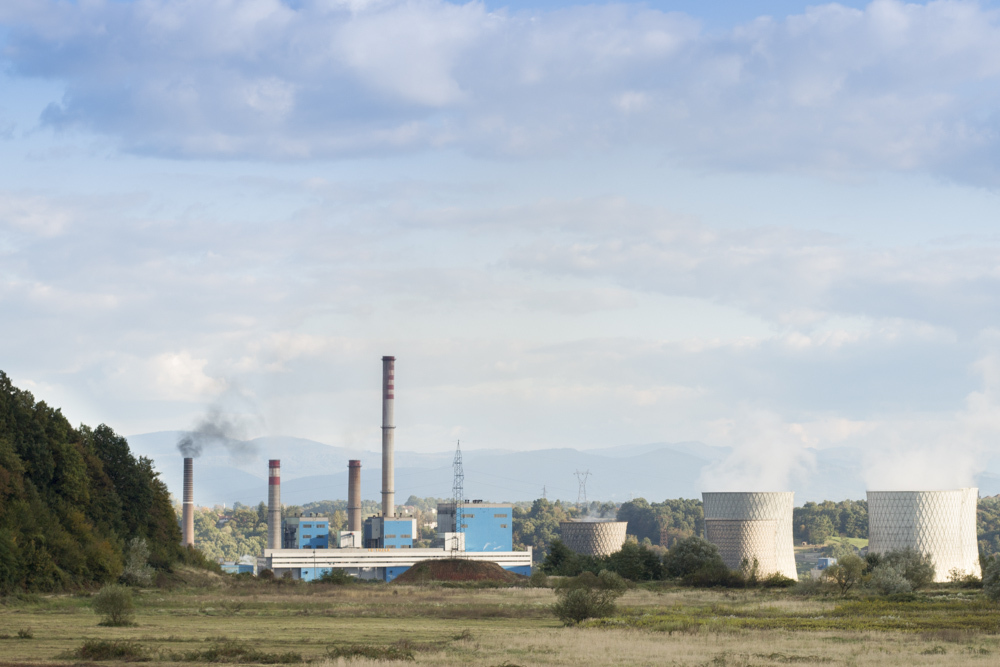
Tuzla coal power staion (Image: Bankwatch)
China’s ‘green policies’ in practice
China’s “Green Credit Directive” and its key performance indicators require Chinese banks to assess, monitor and mitigate social and environmental impacts throughout the lifecycle of the project. However, the project’s planned ash disposal site Šički Brod is without an environmental permit, and yet, China Exim failed to factor in this irregularity in its project appraisal. This has resulted in an unresolved legal challenge.
One thing is clear: China Exim’s client, Elektroprivreda BiH, is not fulfilling the required level of environmental and permitting obligations. For its part, China Exim has avoided disclosing the bank’s own due diligence on the project.
Local civil society representing the affected communities have since 2013 made efforts to alert China Exim and Chinese authorities overseeing overseas projects including Tuzla 7 about the non-compliance of these practices, but their complaints have fallen on deaf ears.
While the spirit of the Green Credit Directive and other recent green policies launched jointly with China’s Belt and Road Initiative are laudable, if China Exim finances projects like Tuzla 7 and others in the pipeline, there won’t be much left to inspire confidence about China’s green leadership.
The only other thing more pressing than the impending cold season and escalation in air pollution in Tuzla, is the China+16 summit next week in Budapest.
During these high-level meetings, financing contracts are signed. But why would any government rush to throw their country’s public budget into such a long-term loan when so many problems with this project remain unaddressed? To be sure, the answer is not for the benefit of air quality and the health of local people.
This article was written by Bankwatch, a non-governmental organisation that exposes the risks of international public finance.
